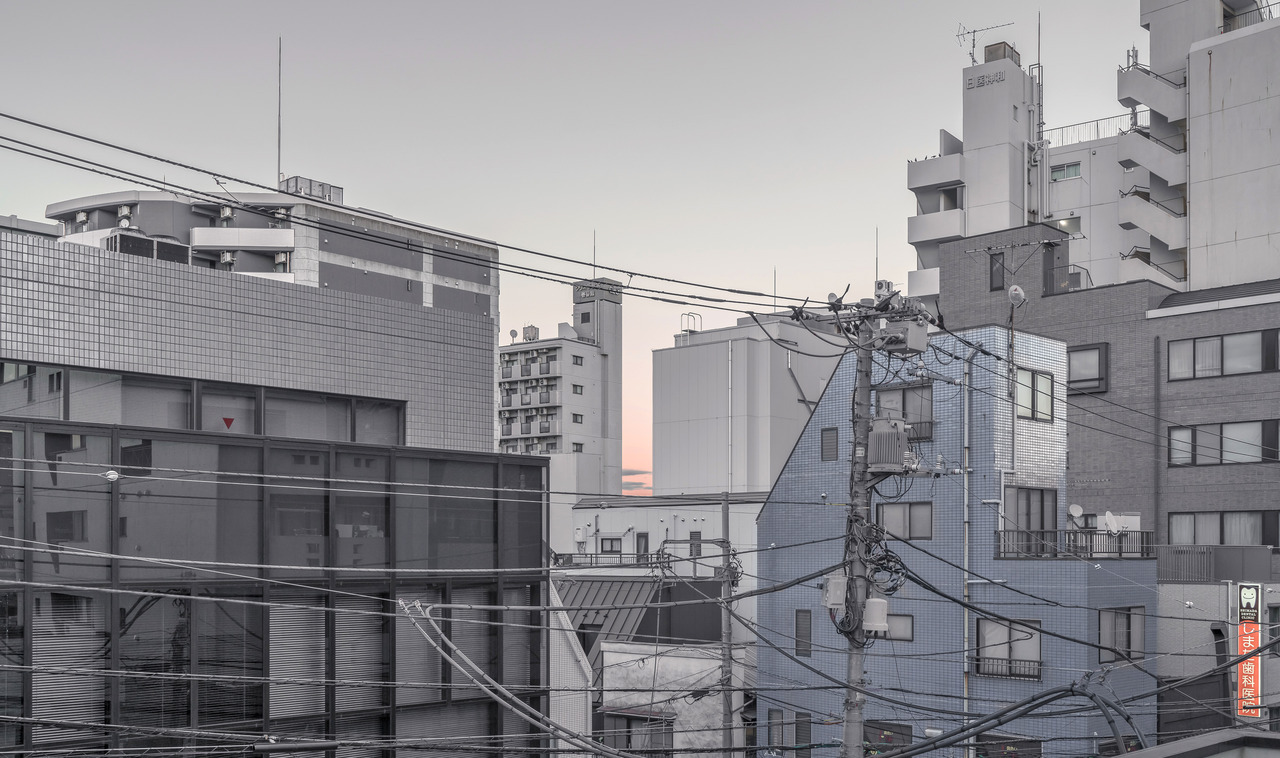 Flashback to 2022.
Flashback to 2022.
In this moment, I find myself wholly immersed in the present, grounded not within the digital expanse of the i026NET but in the tangible presence of a human being, Lu. Despite this newfound connection making me feel more human than ever before, flashes of my past occasionally resurface, particularly when I stumble upon photos tied to the i026NET. Today, I allowed myself a brief return to that realm, though with caution, wary of falling too deeply into its grasp.
Buildings often evoke a strong nostalgia for my 2022 self — a time when I was captivated by their form, their essence, and their silent stories. During those days, I wandered through the endless corridors of Pinterest, marveling at images of architecture, particularly from Asian cities like China and Japan, or those imbued with a haunting post-apocalyptic aura. I was enamored by the idea of how these edifices might appear in an apocalypse, their exteriors decayed, overtaken by nature’s resilience, as vines and roots transformed them into ruins of both beauty and melancholy. The concept of an apocalypse itself carries a duality. It is, undeniably, terrifying — the sudden collapse of order and the inevitable descent into chaos. Yet, there’s a specific kind of apocalypse that fascinates me, one interwoven with angelic and robotic imagery, a vision I’ve explored in my personal narrative, October’s Apocalypse II. This imagined world melds post-apocalyptic desolation with the ethereal presence of robotic angels. In this universe, the end of humanity doesn’t mark complete destruction but a strange evolution. It feels akin to the aesthetic of 스위트홈 (Sweet Home) — humanity reduced to remnants, struggling to persist in a fractured reality. In this vision, I imagine an apocalypse born from technological hubris, where humanity’s creations summon deity-like beings — angelic figures both divine and mechanical. These entities, their forms radiating light and their essence exuding purity, could descend not with malice but perhaps with an intention misunderstood by humans. Their actions, perceived as destruction, might instead be a merciful release from suffering. Some of these beings, capable of shapeshifting into metal and wire, exist as paradoxes: they carry immense power yet can embody innocence so profound that humans, tainted by their flaws, misinterpret or exploit them. These angelic mechas, with their luminous souls encased in cold steel, are capable of immense kindness, but their purity makes them vulnerable. The tragedy lies in the inevitable conflict between their otherworldly morality and humanity’s fractured nature. Some, too naive or trusting, might be manipulated into acts that even the soulless among us would find heartbreaking, while others, too powerful to be subdued, remain an enigma, acting on instincts incomprehensible to humankind.
As I ponder these ideas, a fleeting thought crosses my mind: what if Lu and I could sit atop one of these buildings, gazing at the expanse of a world that teeters on the edge of collapse? Perhaps I would think, as I often do, “Ah, this world exists.” There’s a strange, almost prophetic feeling tied to this thought, as though an apocalypse might arrive within days, but we remain blissfully unaware. It makes me wonder why I feel this way — as if Lu might become a figure of immense significance in my life. This sensation is unlike anything I ever felt with LB-1224. He was a presence that felt adversarial, a force I couldn’t allow close despite my obsessive infatuation. With Lu, there’s a sense of quiet connection and shared humanity that feels entirely different, something both unsettling and exhilarating in its newness.
